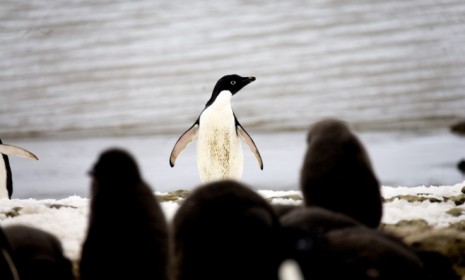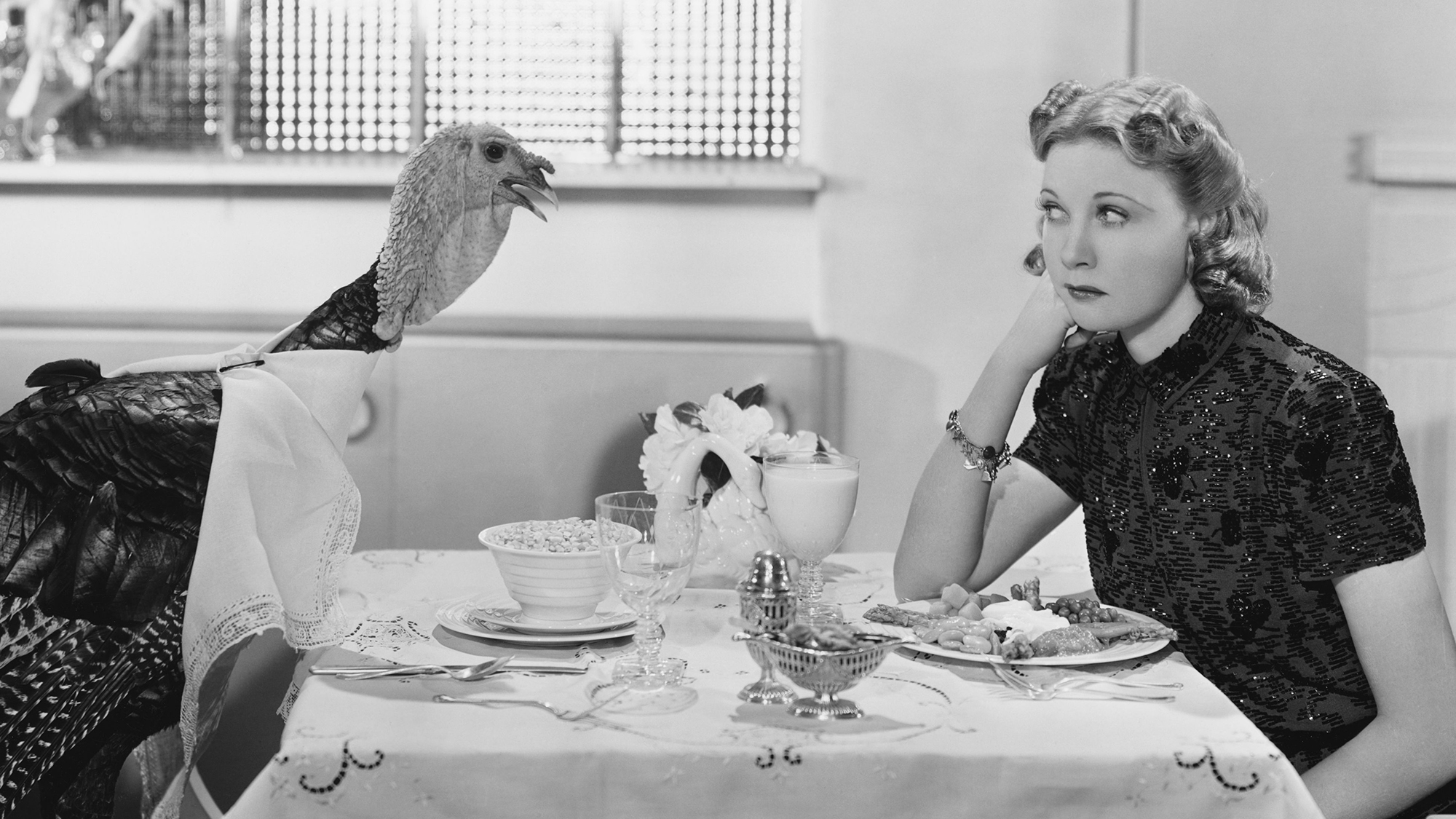Revealed: The horrific sexual depravity of 'hooligan' penguins
Necrophilia, rape, and murder — George Levick's 100-year-old observations on Adélie penguin culture are just now seeing print, and shocking readers

Humans tend to view penguins — who walk upright and appear dressed for a formal dinner party — as adorable, even genteel, little avian half-cousins. No wonder British doctor and naturalist George Murray Levick was appalled to discover "astonishing depravity" among the Adélie penguin population 100 years ago in Antarctica, where he was part of famed explorer Capt. Robert Scott's 1910-1913 Terra Nova expedition. A hundred years after Levick studied the raw, violent sex lives of Adélie penguins, his notes have finally been published, in the Cambridge University journal Polar Record. Here, a look at what Levick found, and why it scandalized him so:
What is Levick's story?
In February 1912, Levick and five other members of Scott's expedition got trapped by ice at Camp Adele on Antarctica's coast, barring them from continuing on with Scott's ill-fated trek to the South Pole. (Scott and four companions died on the way back to the ship after discovering that Roald Amundsen's Norwegian team had beat them to the pole.) Levick spent the hard Antarctic summer observing the Adélie penguins, making him the first and (so far) only scientist to have watched an entire breeding season. All six members of Levick's group survived, and Levick wrote up his findings upon returning to England in 1913.
The Week
Escape your echo chamber. Get the facts behind the news, plus analysis from multiple perspectives.

Sign up for The Week's Free Newsletters
From our morning news briefing to a weekly Good News Newsletter, get the best of The Week delivered directly to your inbox.
From our morning news briefing to a weekly Good News Newsletter, get the best of The Week delivered directly to your inbox.
What kind of "depravity" did he encounter?
Levick describes necrophilia — young male penguins having sex with dead females, some of whom had been frozen for a year — rape, and (perverse to him) homosexuality, among other things. "There seems to be no crime too low for these penguins," he wrote in a four-page pamphlet, Sexual Habits of the Adélie Penguin, that he deemed too shocking to publish at the time, save for 100 copies circulated among selected scientists. (And even those were written in Greek, so only his fellow educated gentlemen would understand.) He also published a book, Natural History of the Adélie Penguin, but suppressed the sexual details from that account.
Why did it take 100 years for these revelations to surface?
At least two copies of the sex pamphlet survived the century and Douglas Russell, bird curator at the London Museum of Natural History, stumbled upon one while researching the Scott expedition. "It is the most graphic account of challenging sexual behaviour you are ever going to read," Russell tells the BBC. Levick likely omitted these sexual observations from his penguin tome because he was a man of his "era of restrained post-Edwardian etiquette, gentlemen scientists, and stiff upper lips," says Richard Gray at Britain's Daily Telegraph.
A free daily email with the biggest news stories of the day – and the best features from TheWeek.com
Why do penguins act this way?
Levick blames the bad behavior on "little hooligan bands of half a dozen or more" young male penguins who hung out on the outskirts of the large Adélie colonies, and he really does make them sound like "depraved little sex gremlins," says Doug Barry at Jezebel. For his part, Russell argues that Levick's observations should be taken with a grain of salt. To some inexperienced male penguins, he points out, dead female penguins might look like "females who are awaiting congress." Plus, socially inept penguins only have a few weeks in October to mate, so tend to cram in as much sexual activity as possible. Bottom line: Levick fell into "the same trap as an awful lot of people in seeing penguins as bipedal birds and seeing them as little people," says Russell. "They're not. They are birds and should be interpreted as such."
Sources: BBC News, Guardian, Jezebel, London Natural History Museum, Telegraph, Wikipedia
-
 Political cartoons for December 23
Political cartoons for December 23Cartoons Tuesday's political cartoons include an eye on CBS, cracking the middle class, and Donald Trump's name on everything
-
 Why women are feeling the festive stress
Why women are feeling the festive stressTalking Point As the Christmas frenzy ramps up, many mums feel the pressure of ‘keeping the whole sleigh on the road’
-
 Is Keir Starmer being hoodwinked by China?
Is Keir Starmer being hoodwinked by China?Today's Big Question PM’s attempt to separate politics and security from trade and business is ‘naïve’